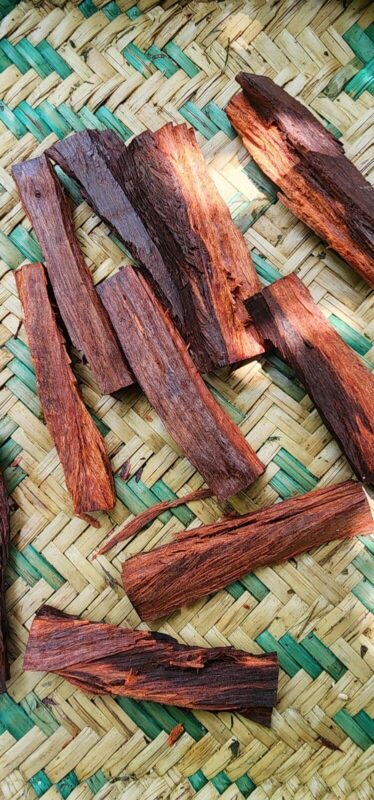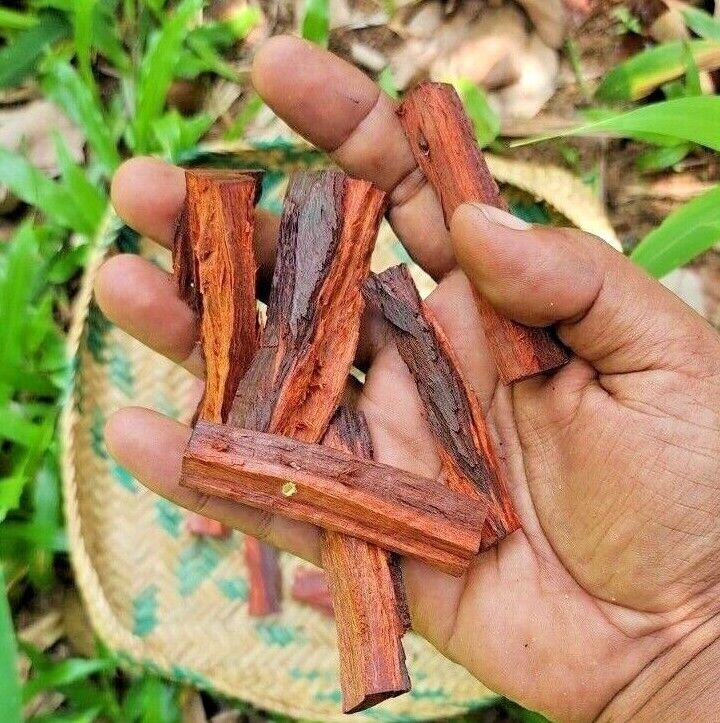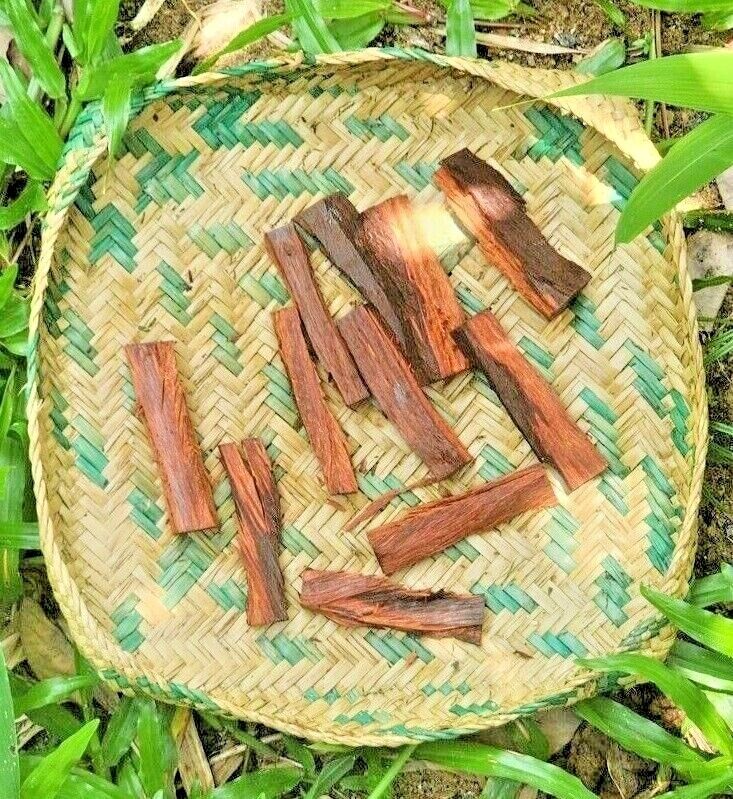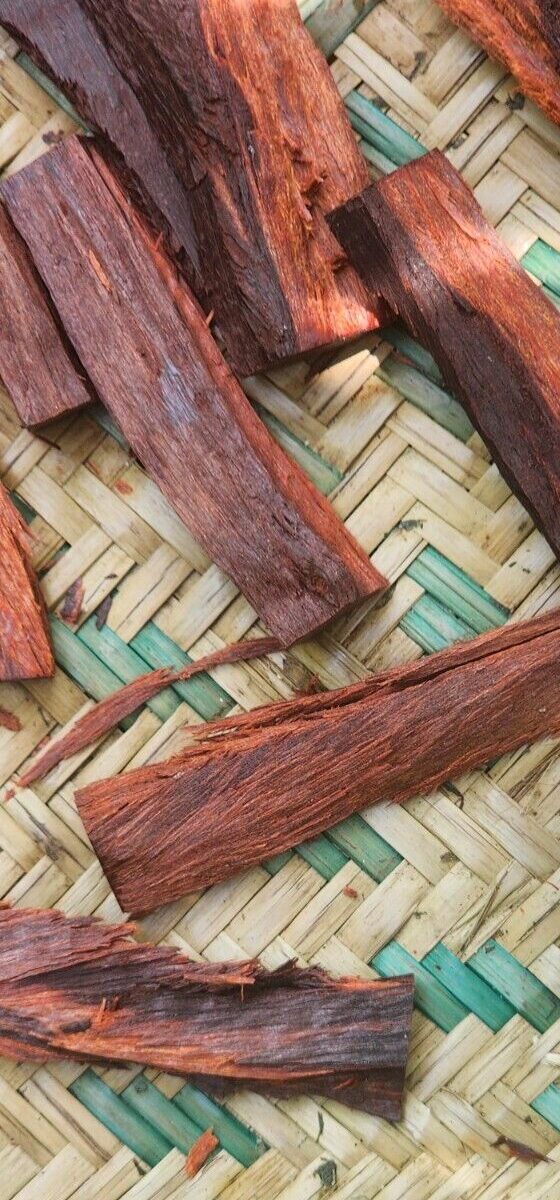Blog
Red Sandalwood in Sri Lanka: A Timeless Botanical Treasure

Sri Lanka is home to a diverse range of flora, each with its unique ecological, cultural, and economic significance. Among these is Red Sandalwood, a plant that has been revered for centuries for its therapeutic and commercial value. Known locally as “Rakta Chandanaya”, Red Sandalwood (Pterocarpus santalinus) is an iconic species treasured not only in Sri Lanka but also across South Asia.
In this article, we delve into the fascinating world of Red Sandalwood, exploring its historical importance, medicinal properties, ecological contributions, and its conservation challenges.

What is Red Sandalwood?
Red Sandalwood, scientifically known as Pterocarpus santalinus, is a slow-growing deciduous tree native to South India and Sri Lanka. It is part of the Fabaceae family and is renowned for its distinctive red heartwood, which has been a sought-after material for centuries. Unlike the fragrant white sandalwood (Santalum album), Red Sandalwood does not emit a fragrance but is prized for its striking color, medicinal benefits, and use in traditional rituals.
Key Features of Red Sandalwood
- Scientific Name: Pterocarpus santalinus
- Common Names: Red Sandalwood, Rakta Chandanaya
- Family: Fabaceae
- Native Range: Sri Lanka and South India
- Habitat: Dry and arid regions, often found in scrub forests
- Distinctive Characteristics: Dark reddish heartwood, compound leaves, and yellow flowers
The Historical Significance of Red Sandalwood in Sri Lanka
Red Sandalwood has been used in Sri Lankan traditions for centuries, serving as a symbol of purity, healing, and luxury. Ancient texts and historical records highlight its use in Ayurvedic medicine, dyeing fabrics, rituals, and even as an export commodity.
1. Ayurvedic Medicine
In Sri Lankan Ayurvedic practices, Red Sandalwood is considered a cooling agent and is often used in remedies to treat skin disorders, fevers, and inflammations. Its powdered form is a common ingredient in herbal pastes and decoctions.
2. Cultural and Religious Use
Red Sandalwood is an essential element in Buddhist and Hindu rituals in Sri Lanka. The wood is often ground into a paste to create symbolic marks on the forehead during ceremonies. It is also used to craft prayer beads and artifacts.
3. Textile Dyeing
The rich red pigment derived from Red Sandalwood has been historically used to dye fabrics, producing vibrant hues that are resistant to fading.
Medicinal Benefits of Red Sandalwood

The medicinal properties of Red Sandalwood make it a cornerstone of traditional remedies. Here are some of its key health benefits:
1. Skin Health
Red Sandalwood is widely used in skincare for its ability to treat acne, blemishes, and sunburn. It is also known to rejuvenate the skin, leaving it radiant and smooth.
2. Anti-inflammatory Properties
The plant’s bioactive compounds help reduce inflammation, making it effective in treating conditions such as arthritis and sore muscles.
3. Detoxifying Agent
Red Sandalwood is believed to purify the blood, helping to eliminate toxins and promote overall health. It is commonly used in tonics and herbal teas.
4. Wound Healing
The antimicrobial and cooling properties of Red Sandalwood make it a natural remedy for cuts, burns, and wounds. It helps in faster healing while preventing infections.
5. Fever and Heat Reduction
In Ayurvedic medicine, Red Sandalwood is used as a natural antipyretic to reduce fevers and combat heat-related illnesses.
Ecological Importance of Red Sandalwood
Red Sandalwood plays a vital role in its ecosystem, offering numerous environmental benefits:
1. Soil Enrichment
As a member of the Fabaceae family, Red Sandalwood contributes to soil nitrogen fixation, improving soil fertility in its habitat.
2. Habitat for Wildlife
The tree provides shelter and sustenance for various birds, insects, and animals, fostering biodiversity in dry forest ecosystems.
3. Erosion Control
The extensive root system of Red Sandalwood helps stabilize soil, preventing erosion in arid and semi-arid regions.
Phytochemical Composition of Red Sandalwood

The remarkable properties of Red Sandalwood stem from its rich phytochemical profile, which includes:
- Santalin: A pigment responsible for its red color, used in dyes and cosmetics.
- Flavonoids: Potent antioxidants that combat free radicals and reduce inflammation.
- Terpenoids: Bioactive compounds with antimicrobial and anti-inflammatory benefits.
- Tannins: Astringent compounds that aid in wound healing and skin care.
These compounds make Red Sandalwood a valuable resource for both traditional and modern applications.
Modern Uses and Economic Potential
With its increasing recognition in global markets, Red Sandalwood has found applications beyond traditional medicine and rituals. Here’s how it is being utilized today:
1. Cosmetics and Skincare
Red Sandalwood is a popular ingredient in natural skincare products due to its ability to treat hyperpigmentation, acne scars, and uneven skin tone.
2. Herbal Supplements
Its detoxifying and anti-inflammatory properties have made it a sought-after component in herbal supplements aimed at improving skin health and overall wellness.
3. Natural Dye Industry
The vibrant red pigment from Red Sandalwood is in demand for creating eco-friendly dyes for textiles and cosmetics.
4. Woodcraft and Artifacts
Red Sandalwood’s hard and richly colored wood is used to craft high-value furniture, ornaments, and religious artifacts.
Conservation Challenges
Despite its cultural and economic importance, Red Sandalwood faces significant conservation challenges due to overexploitation and habitat loss. Here are some of the threats:
- Illegal Logging: The high value of Red Sandalwood in international markets has led to rampant illegal harvesting.
- Deforestation: The loss of dry forest habitats in Sri Lanka threatens the natural growth of Red Sandalwood trees.
- Slow Growth Rate: As a slow-growing species, it struggles to regenerate in areas where it has been overharvested.
Conservation Efforts and Sustainable Solutions

To preserve this valuable species, Sri Lanka has implemented several measures:
- Legal Protection: Red Sandalwood is a protected species under Sri Lankan law, with strict regulations on its harvesting and trade.
- Reforestation Programs: Initiatives to replant Red Sandalwood trees in degraded forest areas are helping restore its population.
- Community Awareness: Educating local communities about sustainable harvesting practices can reduce the pressure on natural populations.
- Research and Development: Encouraging studies on Red Sandalwood’s propagation and cultivation methods can aid in its conservation.

Red Sandalwood (Pterocarpus santalinus) is not just a tree—it is a symbol of Sri Lanka’s rich cultural heritage and natural wealth. From its medicinal properties to its ecological contributions, this species offers immense value to both humans and the environment. However, its future depends on our ability to protect and sustainably utilize this botanical treasure.
By fostering conservation efforts, promoting sustainable practices, and raising awareness about its importance, we can ensure that Red Sandalwood continues to thrive for generations to come. Let us cherish and preserve this timeless gem of Sri Lanka’s biodiversity.

Discover more from Nath Mart
Subscribe to get the latest posts sent to your email.
